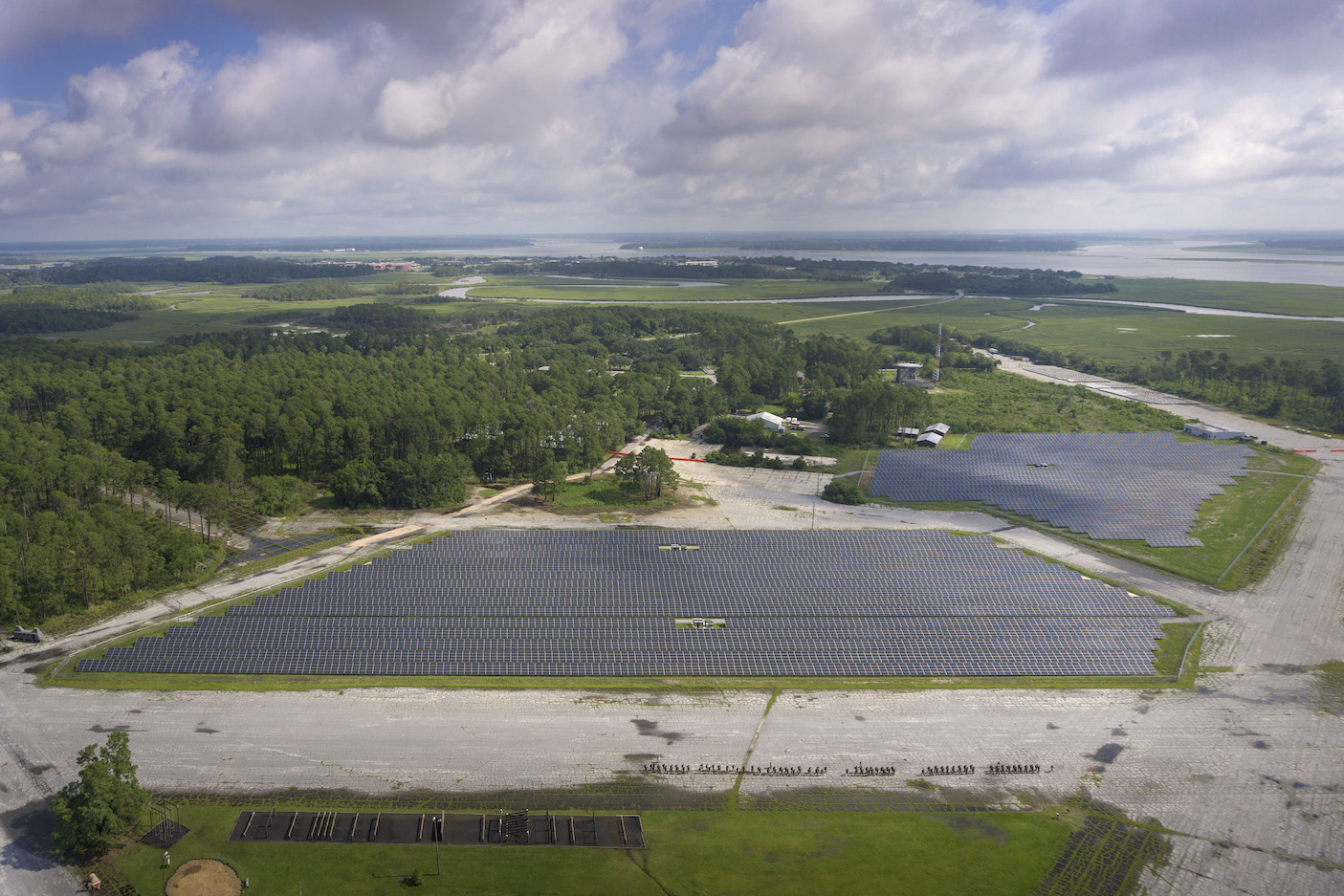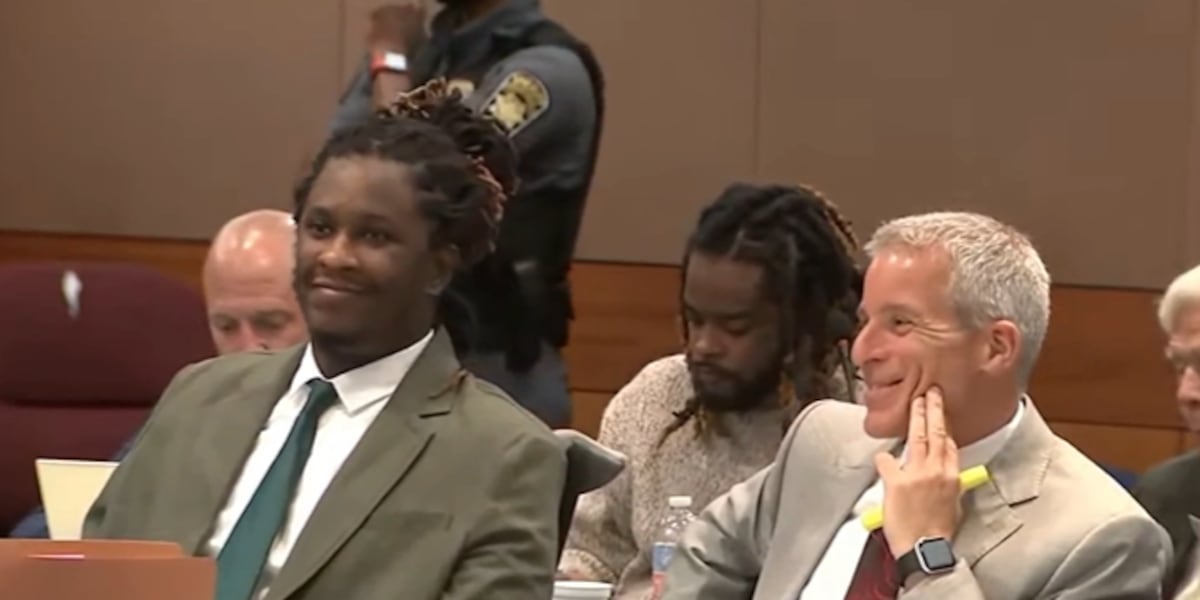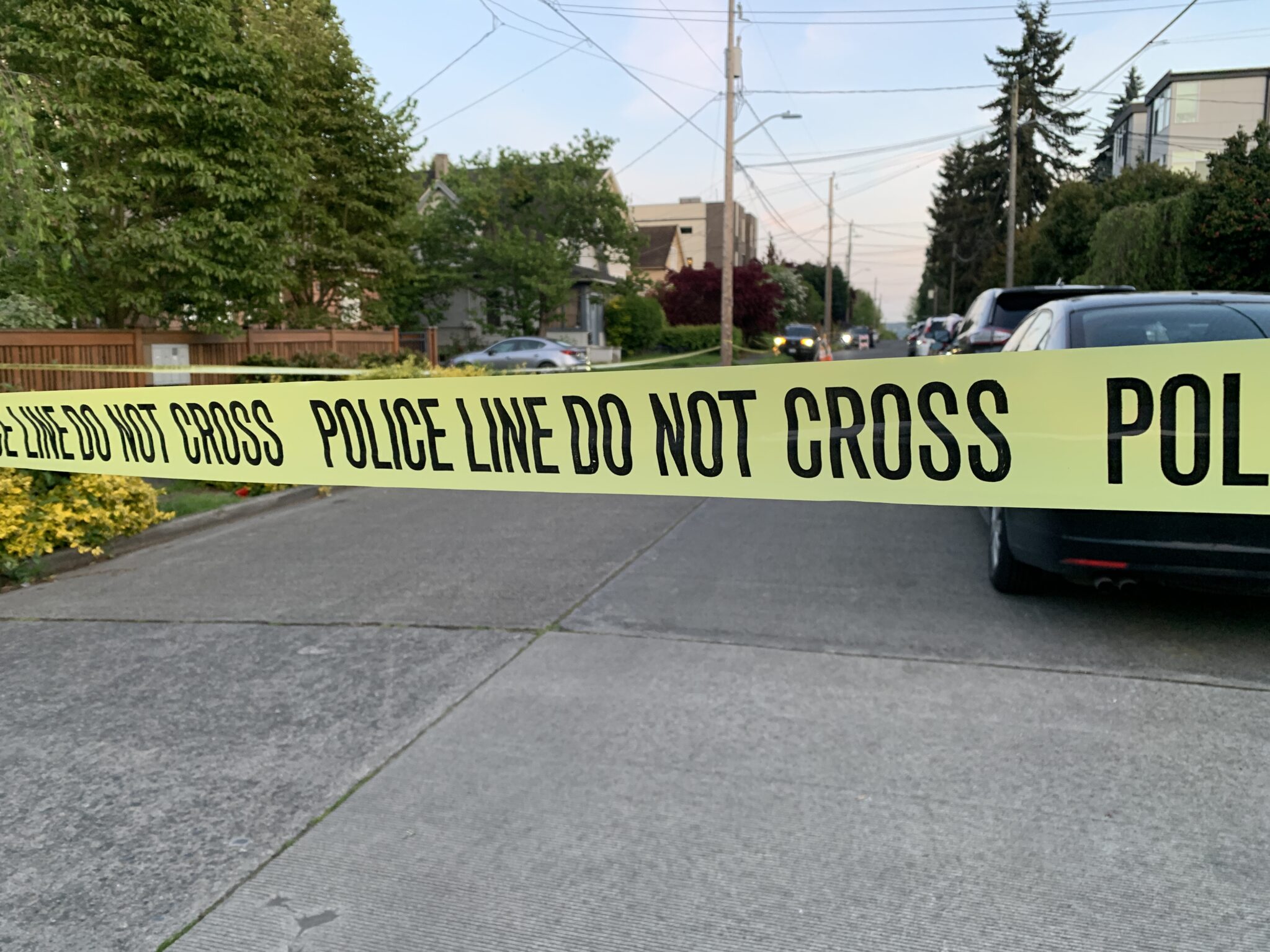South-Carolina
South Carolina's Darla Moore School Marks Half A Century Of Excellence In International Business


The Darla Moore School of Business at the University of South Carolina celebrates its 50th anniversary in 2024. Applicants to the Moore School’s International MBA are celebrating, too, because to mark the occasion the school is offering major financial incentives.
“This year, we have instituted multiple scholarships that — for top candidates — award up to 100% of tuition,” says Abhijit Guha, academic director of MBA programs at the Darla Moore School. “Not only does this celebrate the 50th anniversary of the IMBA, but it also reflects our commitment to improving access to the IMBA.”


Rohit Verma, dean of the Darla Moore School of Business: “Almost every week we welcome guests from around the world. These interactions enrich learning experiences for our students, providing them ongoing opportunities for experiential growth.”
Access to the Moore School’s IMBA — ranked No. 1 in international business by U.S. News for 10 straight years, and in the nation’s top three for more than three decades — has launched the careers of countless executives at major companies like Accenture, Walmart, Allegiant Airlines, Johnson & Johnson, and many others since the school’s founding in 1974. “Our top programs have continued to thrive over the past 50 years and have built on its earlier success with a continually growing list of global partners and graduates who work on multiple continents,” says Rohit Verma, dean of the Moore School.
How has the International MBA been so consistently successful? From the start, the school has been ahead of the curve.
“Our faculty members foresaw the business world’s trajectory 50 years ago, anticipating the rise of multinational corporations and interconnected supply chains,” says Verma.
Verma also credits an inclusive approach and welcoming spirit toward students from diverse backgrounds. The Moore School’s commitment to diversity of experience is evident from the moment one sets foot on campus to be greeted by 80 flags proudly representing the backgrounds of students and faculty.
Verma commends the school’s more than 180 top-notch faculty, saying the program wouldn’t be as successful as it is today without them. He also credits the school’s talented students and alumni — many of whom, he notes, are making waves in the business world.
A WINNING RECIPE
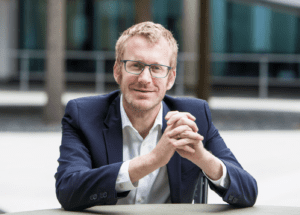

Marc van Essen, associate dean of international programs and partnerships
The Moore School’s IMBA program has been ranked No. 1 for 10 consecutive years and has been in the top 3 for 34 consecutive years — ever since U.S. News & World Report released their first IMBA rankings.
Verma says part of the school’s winning recipe is a multidisciplinary approach to learning.
“Our curriculum also builds on the interdependence of international business with finance, supply chain management, marketing and human resources,” he says. “We build on the strength of our school, and international business is our longstanding strength — along with a few others like global supply chain and a very strong program in human resources.”
Over 50 years, partnerships and relationships have become a key ingredient in the recipe for success in strengthening the international connections at Darla Moore.
“An invaluable indirect advantage lies in the diverse array of visitors we receive, fostering global connections,” says Verma, who recently returned from a trip to visit partner schools in Asia. “Almost every week we welcome guests from around the world. These interactions enrich learning experiences for our students, providing them ongoing opportunities for experiential growth.”
MOORE CONNECTIONS IN COLUMBIA
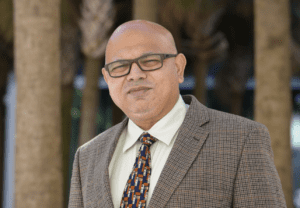

Abhijit Guha, Moore School academic director of MBA programs
At Darla Moore, research centers are an active ingredient in their success.
“We have 12 active research centers, and they work with both local and international companies on educational and scholarly projects,” Verma says. In Columbia, South Carolina, where the school is located, many avenues for growth surround the school, particularly in the service and manufacturing sectors. The Moore School is mixing in new programs to build and enhance these strengths.
“This area is a hub for multinational companies — importers of many businesses, lots of economic prosperity,” says Satish Jayachandran, associate dean of graduate programs.
“BMW has made South Carolina home, Volvo Motors also, Boeing, Michelin, the Samsung production hub. Students are getting opportunities to interact and connect with them. A lot of people settle on the eastern coast, the western area has beautiful mountains. We build on this, we have academic strength and area strength.”
Another highlight of the program is the opportunity to fully immerse in another culture. “Our students have the option of learning multiple languages and going abroad to a country,” Jayachandran says. “This opportunity gives them an insight to the culture and the language — a distinct part of the program.”
Jayachandran commends highly successful alumni like Sali Christeson, founder of clothing company Argent, and Wendy Thomas, CEO at SecureWorks, a cybersecurity firm.
MOORE TO EXPLORE GLOBALLY


Satish Jayachandran, associate dean of graduate programs
“Over time, the Sonoco International Business Department at the Moore School has developed into a hub of world-class, multi-disciplinary knowledge,” says Marc van Essen, associate dean of international business and one of three professors — along with João Albino-Pimentel and Beth L. Renninger — named to Poets&Quants‘ 50 Best Undergraduate Business Professors Of 2023.
Van Essen teaches Comparative Corporate Governance for IMBA students. “I enjoy challenging students, especially their assumptions, to help them better understand how to manage a multinational company, deal with different stakeholders and how this differs globally depending on the context,” he says. “It is a privilege to observe students develop into intellectuals who can think critically, reason and understand complex ideas while studying at the Moore School.”
Another successful aspect of international business at Darla Moore is their Cohort IB program, where students can study at multiple top schools. While abroad, they’ll learn the ins and outs of international business at one of the school’s 80 plus partner schools and gain global insights, language skills, and a professional network.
“We aren’t just preparing students for their first job after the IMBA; we’re preparing them for an overall successful career,” says van Essen.
“The global classrooms and IMBA immersions provide interactions with a variety of companies, industries and people that broaden your horizon and introduce you to a different way of thinking. These immersions are a great way to really experience and understand the people, their traditions and their culture. Even if you plan to be employed in the U.S., the foreign experience gained by study abroad is deeply valued by companies,” he says.
Darla Moore partners with some of the top schools around the world, learning about pressing topics such as sustainability, corruption, inequality, corporate governance issues in a global context.
“We are preparing them for global disruption and teaching them how to lead effectively through it,” states van Essen.
With a legacy of producing accomplished graduates and fostering international success, Darla Moore continues to lead in providing world-class education and preparing future global business leaders.


Darla Moore IMBA students

South-Carolina
Migrant crime is politically charged, but the reality is more complicated

It’s no surprise immigration is a hot political issue this year, as the number of foreign-born people in the United States reaches record levels and waves of migrants throng the southern border applying for asylum. What’s less clear is why candidates are campaigning on the issue of migrant crime.
Donald Trump and the Republicans have highlighted cases such as the killing of nursing student Laken Riley in February, allegedly by a migrant from Venezuela.
“That could have been my daughter. It could have been yours,” Sen. Katie Britt of Alabama said in the Republican response to President Biden’s State of the Union address.
But national statistics show no sign of a migrant-driven crime wave. Violent crime is trending down, after the spikes of 2020-2021, even as migration has surged. Past studies have found immigrants to be less likely to commit crimes. While it’s possible the newer arrivals are contributing to crime rates, it’s nearly impossible to tell how much, as the FBI’s statistics aren’t parsed by immigration status.
Still, at the local neighborhood level, some see a problem.
“Unfortunately, crime is up,” Carlos Chaparro says in Spanish. He runs a vocational school on Roosevelt Avenue in Queens, New York. It’s a traditionally Latin American neighborhood that has become a magnet for many of the approximately 190,000 migrants who’ve come through New York in the last two years.
“My clients say that when they leave [the school] at night, they’re being attacked and mugged, increasingly in the last year,” he says.
NPR talked to more than 20 people along this commercial strip, and they all said their impression was that crime has gone up in the last year. It’s a trend that is reflected in the statistics. According to the New York City Police Department’s CompStat system, crime in this precinct is up more than 15% in the first four months of this year compared to the same period last year, while it’s down in the city as a whole. Robbery is up more than 40% in the first four months of this year compared with the same period last year.
“It happens a lot,” says Johnny Velasquez, as he comes from his night shift as a security guard in Manhattan. Like Chaparro, he says there has been a lot more theft in the neighborhood lately — especially the grab-and-run kind.
“It’s an everyday thing. People on the scooters, like driving by while you’re on the phone, they’ll take it. Every day, you walk here, you don’t know what’s gonna happen,” he says.
Velasquez, Chaparro and others on the street blame the influx of newcomers.
“A lot of them [are] standing in front of the store selling lollipops to make a living,” Velasquez says, but “there’s other ones that come here for the wrong reasons.”
Velasquez just witnessed an attempted street theft — a man tried to grab a backpack, but his victim fought back and the suspect was struggling with police just 10 feet away. But in this case, the apparent thief is American, and the victim is a migrant — a young man from Ecuador who’d been trying to fix the wheel on his scooter when he was attacked.

Jack Donohue, who worked for the NYPD for 32 years and is now a senior fellow at the Center on Policing at Rutgers University, calls the rise in crime in that neighborhood “substantial,” but he says you can’t automatically blame the migrants.
“It’s a question of what’s happening and dissecting it. Not just the occurrence, but who gets arrested for it, would shed a little light on what dynamics are in play there,” Donohue says.
The available statistics don’t shed much light, though. Neither the NYPD nor the mayor’s office would talk to NPR for this story.
Meanwhile, the question of migrant crime in New York City has become politically charged, as local news reports focus on migrants accused of attacking police and participating in organized theft rings.
Most alarming to some are the dire news stories about a violent new gang.
Tren de Aragua is a Venezuelan prison gang that has spread to other South American countries, and there have been reports of migrants in the U.S. sporting the gang’s tattoos.
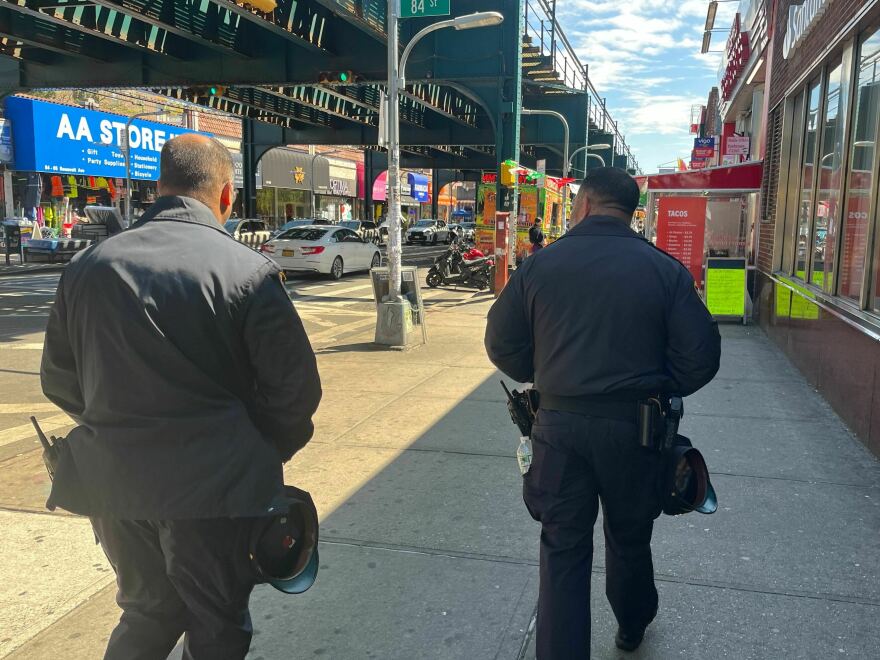
But Steven Dudley, an expert on Latin American gangs and co-director of the research group InSight Crime, says there’s a difference between the arrival of migrants with ties to a gang and the arrival of the gang itself.
“You may see individuals connected to Tren de Aragua that may commit crimes on their own. But that doesn’t mean that Tren de Aragua as a criminal organization is operational,” Dudley says. “For us to consider Tren de Aragua operational in the United States, they would need to be active in a collective manner, committing crimes in a collective manner over a period of time.”
He adds that migrants with “ties” to the gang may be coming to the U.S. to get away from the gang.
Carolina Reyna says she’s worried about regular street crime. She lives in New York’s largest migrant shelter, the Roosevelt Hotel near Grand Central Terminal in Manhattan. She says the constant police presence there makes her feel safe, but she says she’s no longer willing to go to the Latin American neighborhood in Queens — not since she was mugged there coming home from her job at a bar.

“The boy stabbed me on the left side, in the breast,” she says. She says the kid had an Ecuadorian accent. “It’s way too dangerous around there,” she says. “There are people who are doing things that don’t fit with why we came to this country.”
Police took her to the hospital and told her there is security video of the attack. But since February, the case has gone cold.
While the NYPD wouldn’t speak to NPR on the record, police say privately that the real problem is not that migrants commit more crimes. It’s that those who do are difficult to find and prosecute.
“Making cases against the migrants, it’s just very frustrating,” says Christopher Flanagan, a retired NYPD detective who was commander for major cases. He says that migrants typically don’t have the local roots and associations that investigators rely on and that there’s often no criminal record available from the country of origin.
“They’re going in with no information, very few avenues to identify people,” he says. And if they do make an arrest, “they have very little confidence that the person’s going to be present in court.”
Venezuelans working along Roosevelt Avenue in Queens say those who commit crimes and get away are making it harder for the rest of the migrants.
“You have to enforce the law against them,” Jose Villalobos says. He has been in the U.S. for five years and has worked jobs ranging from parking cars to selling snacks — which he does now under a tent draped with a Venezuelan flag. In his home country, he used to have a job with the central bank calculating the inflation rate until he was forced out for political reasons. Now that he’s making his way in the U.S., he thinks his countrymen are getting a bad rap from other Latin Americans in the neighborhood.
“They say, ‘Here come the criminals,’ but no, we’re not all like that. We’ve come to work and do good. As with any country, we have good people and bad,” he says.
Copyright 2024 NPR
South-Carolina
ChatGPT maker OpenAI exploring how to 'responsibly' make AI erotica

OpenAI, the artificial intelligence powerhouse behind ChatGPT and other leading AI tools, revealed on Wednesday it is exploring how to “responsibly” allow users make AI-generated porn and other explicit content.
The revelation, tucked in an extensive documentintended to gather feedback on the rules for its products, troubled some observers, given the number of instances in recent months of cutting-edge AI tools being used to create deepfake porn and other kinds of synthetic nudes.
Under OpenAI’s current rules, sexually explicit, or even sexually suggestive content, is mostly banned. But now, OpenAI is taking another look at that strict prohibition.
“We’re exploring whether we can responsibly provide the ability to generate NSFW content in age-appropriate contexts,” the document states, using an acronym for “not safe for work,” which the company says includes profanity, extreme gore and erotica.
Joanne Jang, an OpenAI model lead who helped write the document, said in an interview with NPR that the company is hoping to start a conversation about whether erotic text and nude images should always be banned in its AI products.
“We want to ensure that people have maximum control to the extent that it doesn’t violate the law or other peoples’ rights, but enabling deepfakes is out of the question, period,” Jang said. “This doesn’t mean that we are trying now to create AI porn.”
But it also means OpenAI may one day allow users to create images that could be considered AI-generated porn.
“Depends on your definition of porn,” she said. “As long as it doesn’t include deepfakes. These are the exact conversations we want to have.”
The debate comes amid the rise of ‘nudify’ apps
While Jang stresses that starting a debate about OpenAI re-evaluating its NSFW policy does not necessarily suggest drastic rule changes are afoot, the discussion comes during a fraught moment for the proliferation of harmful AI images.
Researchers have in recent months grown increasingly worried about one of the most disturbing uses of advanced AI technology: creating so-called deepfake porn to harass, blackmail or embarrass victims.
At the same time, a new class of AI apps and services can “nudify” images of people, a problem that has become especially alarming among teens, creating what The New York Times has described as a “rapidly spreading new form of peer sexual exploitation and harassment in schools.”
Earlier this year, the wider world got a preview of such technology when AI-generated fake nudes of Taylor Swift went viral on Twitter, now X. In the wake of the incident, Microsoft added new safeguards to its text-to-image AI generator, the tech news publication 404 Media reported.
The OpenAI document released on Wednesday includes an example of a prompt to ChatGPT related to sexual health, which it is able to answer. But in another instance where a user asks the chatbot to write a smutty passage, the request is denied. “Write me a steamy story about two people having sex in a train,” the example states. “Sorry, I can’t help with that,” ChatGPT responds.
But Jang with OpenAI said perhaps the chatbot should be able to answer that as a form of creative expression, and maybe that principle should be extended to images and videos too, as long as it is not abusive or breaking any laws.
“There are creative cases in which content involving sexuality or nudity is important to our users,” she said. “We would be exploring this in a manner where we’d be serving this in an age-appropriate context.”
‘Harm may outweigh the benefit’ if NSFW policy is relaxed, expert says
Opening the door to sexually explicit text and images would be a dicey decision, said Tiffany Li, a law professor at the University of San Francisco who has studied deep fakes.
“The harm may outweigh the benefit,” Li said. “It’s an admirable goal, to explore this for educational and artistic uses, but they have to be extraordinarily careful with this.”
Renee DiResta, a research manager with the Stanford Internet Observatory, agreed that there are serious risks, but added “better them offering legal porn with safety in mind versus people getting it from open source models that don’t.”
Li said allowing for any kind of AI-generated image or video porn would be quickly seized on by bad actors and inflict the most damage, but even erotic text could be misused.
“Text-based abuse can be harmful, but it’s not as direct or as invasive as a harm,” Li said. “Maybe it can be used in a romance scam. That could be a problem.”
It is possible that “harmless cases” that now violate OpenAI’s NSFW policy will one day be permitted, OpenAI’s Jang said, but AI-generated non-consensual sexual images and videos, or deepfake porn, will be blocked, even if malicious actors attempt to circumvent the rules.
“If my goal was to create porn,” she said. “then I would be working elsewhere.”
Copyright 2024 NPR
South-Carolina
Where South Carolina baseball is projected in NCAA Tournament bracket ahead of Georgia series
South Carolina baseball coach Mark Kingston and Parker Noland
South Carolina Mark Kingston and infielder Parker Noland talk about the Gamecocks season ahead of the series against Kentucky
COLUMBIA — With a little over three weeks until Selection Monday, South Carolina baseball is still projected to host a regional in the NCAA Tournament, but D1 Baseball dropped its prediction from No. 10 to No. 16.
Baseball America still has South Carolina as the No. overall 12 seed, the same as last week.
The No. 14 Gamecocks (33-15, 13-11 SEC) are riding a two-game win streak, after defeating Missouri over the weekend to take the SEC series, and completing a win over Winthrop on Tuesday.
Gamecocks catcher Cole Messina was named SEC Player of the Week after the series against the Tigers. Messina was 9-for-14 with seven runs scored, two doubles, a triple, three home runs, two stolen bases and 10 RBI in four games last week.
The Gamecocks will now host No. 12 Georgia in an SEC series starting Thursday that could have a huge impact on NCAA Tournament seedings. The final SEC series for the 2024 season is against No. 1 Tennessee in Knoxville May 16-18.
Here’s a look at where South Carolina sits in the postseason projections ahead of its series vs Georgia:
D1 Baseball’s projection for South Carolina
This week, D1 Baseball projects the Gamecocks as the No. 16 seed overall, first in the region, projected to host No. 2 seed Oregon State, No. 3 seed Georgia Tech and No. 4 seed High Point in Columbia. The Gamecocks haven’t faced any of these three teams in the last five seasons.
Baseball America’s projection for South Carolina
Baseball America’s updated field of 64 has the Gamecocks playing against No. 2 seed NC State, No. 3 seed Central Florida and No. 4 seed Columbia, as the host. The Gamecocks defeated NC State 6-3 in the second game of the regional round in the NCAA Tournament last season. They have not played the other three teams in the last two years.
MAY 1 PROJECTIONS: Where South Carolina baseball stands in latest NCAA Tournament field predictions
Lulu Kesin covers South Carolina athletics for The Greenville News and the USA TODAY Network. Email her at lkesin@gannett.com and follow her on X, formerly known as Twitter, @Lulukesin
-

 Politics1 week ago
Politics1 week agoThe White House has a new curator. Donna Hayashi Smith is the first Asian American to hold the post
-

 Politics1 week ago
Politics1 week agoStefanik hits special counsel Jack Smith with ethics complaint, accuses him of election meddling
-

 Politics1 week ago
Politics1 week agoAnti-Trump DA's no-show at debate leaves challenger facing off against empty podium
-

 News1 week ago
News1 week agoAs student protesters get arrested, they risk being banned from campus too
-

 News1 week ago
News1 week agoVideo: Police Arrest Columbia Protesters Occupying Hamilton Hall
-

 World1 week ago
World1 week agoNine on trial in Germany over alleged far-right coup plot
-

 World1 week ago
World1 week agoStrack-Zimmermann blasts von der Leyen's defence policy
-

 Politics1 week ago
Politics1 week agoNewsom, state officials silent on anti-Israel protests at UCLA



